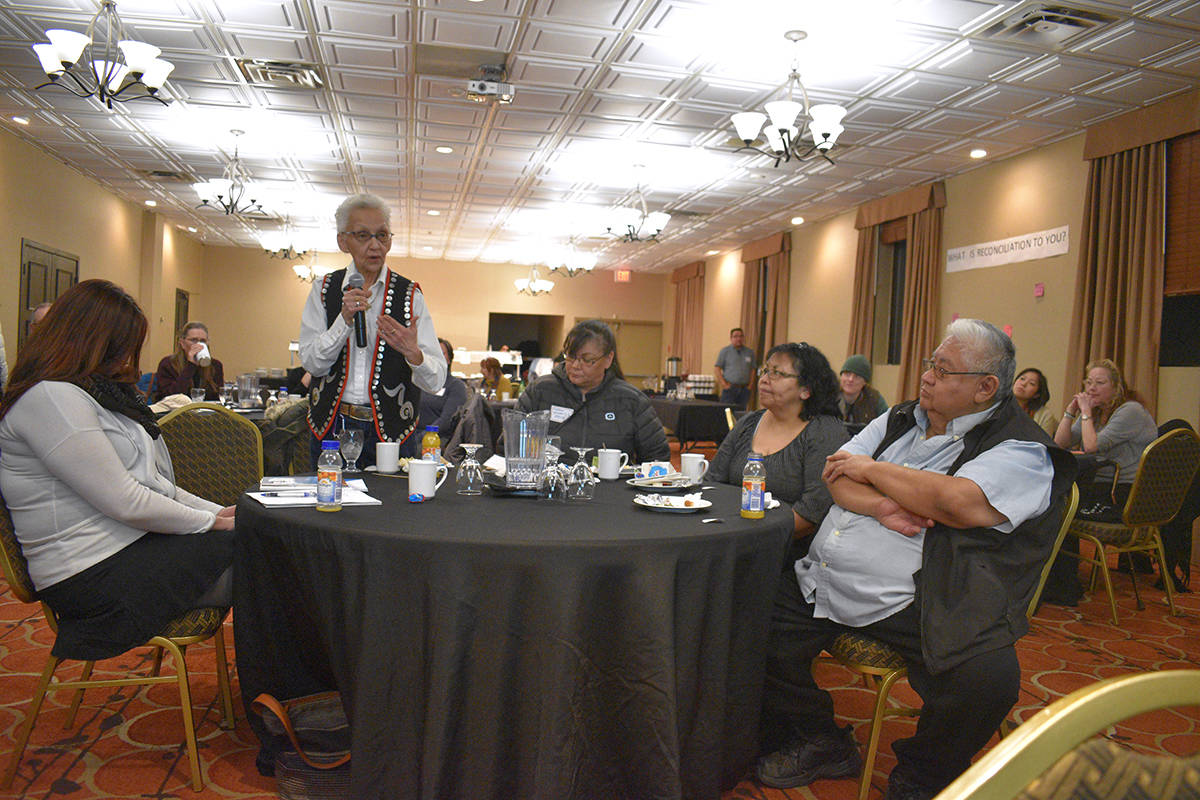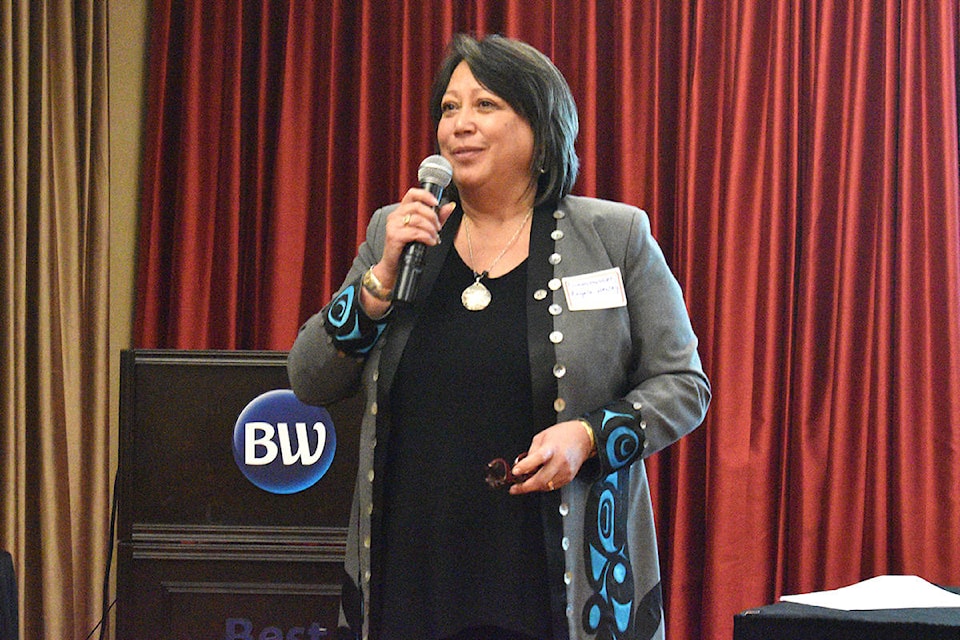An evening open house hosted by the BC Treaty Commission Feb. 21 invited people to discuss and talk about treaty negotiations and reconciliation in the region.
Commissioners Angela Wesley from the Huu-ay-aht First Nations on the west coast of Vancouver Island and Mary-Ann Enevoldsen from the Homalco First Nation in Campbell River were in Terrace to talk about their own experiences with treaty negotiations and how they can play a role in reconciliation.
“One of the best things that has come to us through treaty is the ability to govern ourselves and make our own decisions,” says Wesley, who helped to implement the Maa-nulth Final Agreement in 2011, the first modern-day treaty signed on Vancouver Island.
The nation of around 750 people now operates under a Huu-ay-aht Constitution, meaning it has full ownership and jurisdiction over more than 8,200 hectares of land within their territories. Together, the Huu-ay-aht First Nations Council and hereditary chiefs seek and engage in “responsible and sustainable” economic development under their own laws, according to the nation’s website.
READ MORE: BC Treaty Commission says new deal offers smoother, faster road to treaties
In the years since the treaty was signed, the Huu-ay-aht has purchased 11 properties in Bamfield, a local marketing cafe, a motel, a fishing lodge and bed and breakfast facility, along with gas stations and a campground at the head of the West Coast Trail.
The process is happening slowly, but there has been an increase in the number of people moving back closer to the territory to take advantage of the new job opportunities, Wesley says.
Currently, there are six First Nations in the area in active treaty negotiations, with Kitsumkalum and Kitselas in the fifth and final stages.
Terrace mayor Carol Leclerc gave an emotional opening comment about treaty, mentioning the Cooperation Protocol Agreement between the city, Kitselas and Kitsumkalum, and the joint venture agreement between the city and Kitselas at the Skeena Industrial Development Park.
“Although treaty talks are held between First Nations and provincial and federal governments, the local governments do have a role to play,” Leclerc says.
Wesley says treaty can build relationships between governments and First Nations, and while it was not an easy process, the self-governing aspect that comes under treaty, the land and access to resources can be beneficial.
“The opportunity to bring people back home, to be connected to our homelands again, and to create a really vital and vibrant economy,” Wesley says. “It’s not going to happen overnight, but I think the tools in treaty brought us that ability to develop relationships, to create the economy, and bring people home.”
A couple of audience members asked questions about treaty and the negotiation process.
Kitselas elder Alfred McDames says he is concerned that the current draft of the treaty could be used as another land management document instead of a pathway to gain freedom and independence.
“As long as our rights and titles are respected and not touched, we would be more than happy to sit down and talk about access [to land and resources],” McDames says.
Kitsumkalum’s Cynthia Wunderlich Nelson echoed these thoughts on access, and says she wants to see more democratic referenda for treaty to have more open discussions within the community. Terrace’s Sarah Artis asked about loan forgiveness from First Nations communities for treaty negotiations, which the BC Treaty Commission says is being addressed.
Kitsumkalum Simoyget Richard Inkster, whose mother is Giluts’aaw and father Kitsumkalum, said First Nations governance is complex, and governments should not only negotiate with band councils because they were democratically elected, but all hereditary houses for land title and rights.
Commissioner Enevoldsen used the Sliammon Constitution as an example where both the band council and hereditary chiefs were able to identify areas where the elected government is responsible, and where the heads of families were responsible.
Shared territory agreements between Sliammon, Homalco and Klahoose also helped Homalco identify how these processes would work, she says.
READ MORE: Kitselas and Kitsumkalum sign preliminary treaty agreements
“It was a lot of very difficult conversations between the members themselves. It didn’t always end happy, but they both committed to coming back into the same room and treating each other with respect, and figuring a way out of this,” she says.
“There are a lot of ways our traditional teachings can be incorporated into this treaty process and made part of that.”
The treaty commission’s mandate is not to negotiate treaties but to facilitate negotiations and support the implementation of the UN Declaration, the Truth and Reconciliation Commission’s 94 Calls to Action and the recognition of First Nations rights and title. The process was established in 1992 to address pre-existing Indigenous title and rights.
brittany@terracestandard.com
Like us on Facebook and follow us on Twitter

